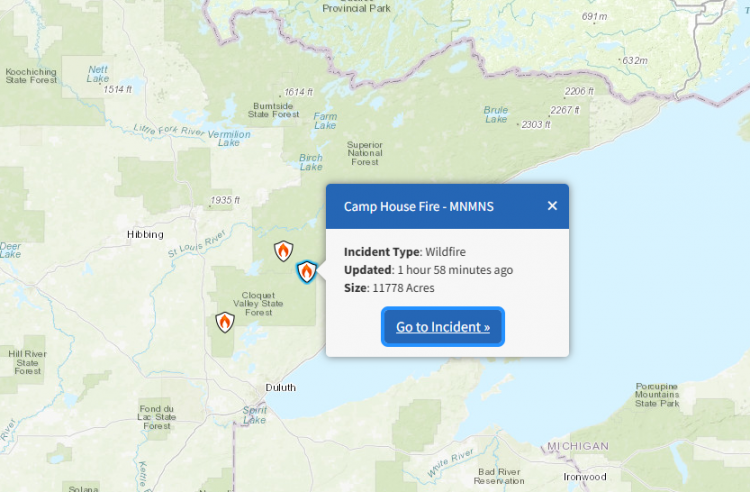Wildfires in northern Minnesota have scorched more than 20,000 acres, destroyed scores of structures, and forced evacuations across St. Louis County as firefighters brace for another day of extreme fire conditions. The Camp House Fire, the largest of the three currently burning, expanded rapidly to 11,788 acres and remained 0% contained as of Tuesday afternoon, officials said.
"Last night, many of our firefighters were out there with no sleep in extremely dangerous conditions," Minnesota Gov. Tim Walz said Tuesday, after activating the National Guard to assist with containment efforts. "We've already seen 970 wildfires this year-40 on Sunday and another 40 on Monday. These are record-setting numbers, and the fires are burning fast."
The Camp House Fire, which began May 11 near Brimson in Superior National Forest, has destroyed at least 144 structures, including homes and seasonal cabins, according to St. Louis County Sheriff Gordon Ramsay. "A lot of destroyed property and our hearts, prayers go out to those that are impacted by this," Ramsay said in a video posted to social media.
The fire grew overnight from about 1,200 acres to nearly 12,000 acres by Tuesday afternoon, driven by wind gusts, low humidity, and dry vegetation left behind by years of insect-killed trees. "When the fire torches through tree canopies, it throws embers into the air like confetti," said Cmdr. Ryan Williams of the Minnesota Incident Command System (MNICS).
Two other uncontained wildfires-the Jenkins Creek Fire and the Munger-Shaw Fire-have burned an estimated 6,800 acres and 1,400 acres respectively. All three blazes remain 0% contained, and their causes are under investigation, MNICS said.
Satellite imagery released by the National Oceanic and Atmospheric Administration showed visible heat signatures and smoke plumes from the fires, which erupted during an unseasonal heat wave over Mother's Day weekend. Temperatures in the Duluth region reached the 80s on Monday and Tuesday, compounding already "near critical" fire conditions, officials said.
St. Louis County issued red flag warnings Monday across the state as the Northern Plains experienced an unusual spike in temperatures into the 90s. "We are seeing the effects of climate change," said Sarah Strommen, commissioner of the Minnesota Department of Natural Resources. "It's harder to compare current fire seasons to what used to be normal. We are trending toward hotter, drier weather-and that's changing everything."
As of Tuesday morning, Minnesota wildfires had burned over 37,000 acres statewide-triple the state's average annual total of about 12,000 acres. Evacuation orders remain in place for dozens of cabins and homes in the affected areas, though no injuries have been reported. Conditions are expected to improve slightly by Tuesday evening, with cooler temperatures and higher humidity possibly helping to slow fire spread.






